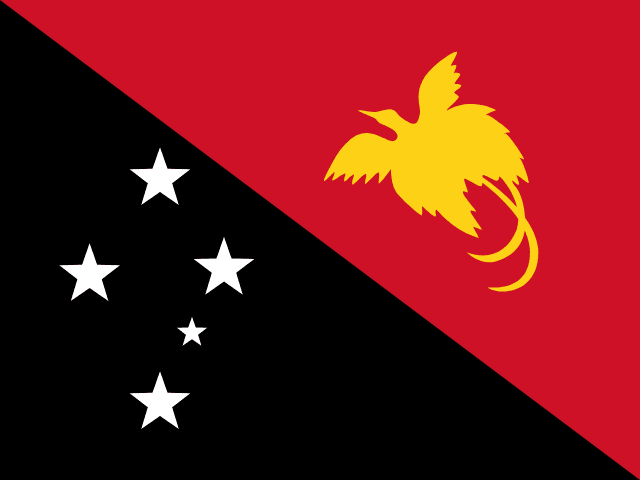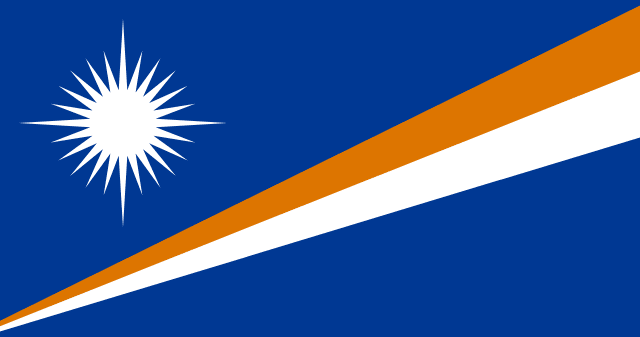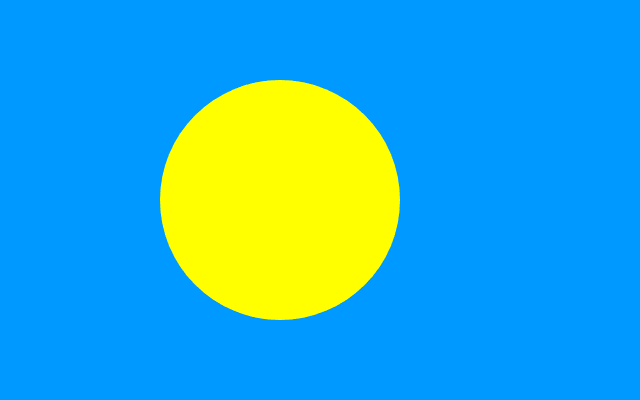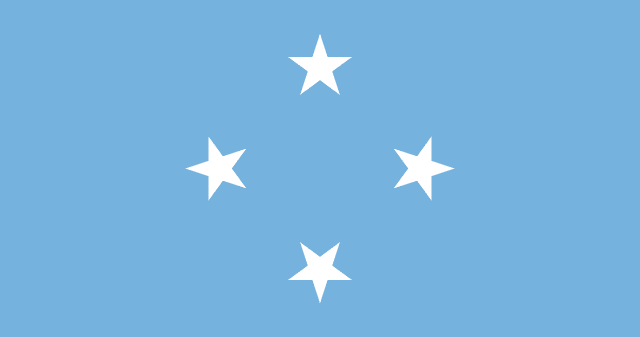Country Information
| Sovereign State | Yes |
| Country Codes | FM, FSM, 583 |
| Official Name | Federated States of Micronesia |
| Continent | Oceania |
| Capital | Palikir |
| Government Type | Federal Presidential Republic |
| Currency | United States Dollar (USD) |
| Calling Code | +691 |
| Member Of | United Nations, Pacific Community, Pacific Islands Forum |
| Population | Approximately 104,000 |
| Total Area | 702 km² |
| Highest Point | Nanlaud on Pohnpei (782 meters, 2,566 feet) |
| Lowest Point | Pacific Ocean (0 meters, 0 feet) |
| GDP Per Capita | USD 3,300 |
| Life Expectancy | 67 years |
| Internet TLD | .fm |
Micronesia National Anthem
Patriots of Micronesia
‘Tis here we are pledging, with heart and with hand,
Full measure of devotion to thee, our native land,
Full measure of devotion to thee, our native land.
Now all join the chorus, let union abide,
Across all Micronesia join hands on every side,
Across all Micronesia join hands on every side.
Flags of Neighboring Countries



History of the Micronesia Flag
The national flag of the Federated States of Micronesia was officially adopted on November 30, 1978, symbolizing the country’s journey towards self-governance and reflecting its cultural and geographic characteristics. The flag features a light blue field with four white stars arranged in a diamond pattern.
The light blue represents the Pacific Ocean, which is a crucial part of Micronesian culture and geography. The four white stars symbolize the four states that make up the federation: Yap, Chuuk, Pohnpei, and Kosrae. Each star corresponds to one state, and their arrangement in the flag reflects their location in the ocean.
Prior to the current flag, the islands that now constitute the Federated States of Micronesia were part of the United Nations Trust Territory of the Pacific Islands, administered by the United States after World War II. During this period, the region did not have its own unique flag and instead used the United Nations flag for official purposes.
The adoption of the flag in 1978 marked a significant moment in Micronesian history, as it was part of the broader process of establishing the nation’s identity following the end of the Trust Territory and moving towards self-government. The flag has since become a symbol of national pride and unity, representing the distinct culture, heritage, and aspirations of the Micronesian people. It is a central element in national celebrations and is deeply respected as an emblem of the nation’s sovereignty and independence.

